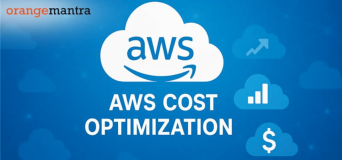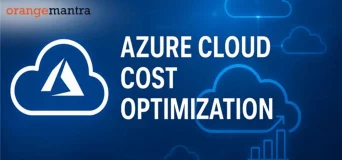
Get to know how to trade in migration chaos for an efficient factory blueprint. Learn the key AWS migration tools for every phase and how to orchestrate them seamlessly. Walk away with a practical, phased strategy to accelerate your migration and significantly reduce risk.
Here’s what you will learn:
- AWS Migration Tools
- How your migration factory runs
If you’re reading this, you’re likely considering a move to the cloud. If you’re like most of our clients, you’re not moving one app, but dozens. Frankly, it can look like a massive, complicated puzzle.
That’s exactly why we’ve stopped thinking about it as a simple “lift and shift.” Instead, we think of it as building a factory. Imagine a well-oiled machine where every tool has a specific role, and all the parts work together on a single, smooth conveyor belt.
This mindset shift takes the potential chaos of AWS cloud migration and turns it into something predictable and manageable.
In this article, we’ll walk you through how to build your own migration factory using AWS migration tools. We’ll show you how to make these tools work in concert, so you can move faster, reduce risk, and even modernize your applications as you go.
Table of Contents
4 Core AWS Migration Tools/Services
Alright, let’s get into the nuts and bolts. Every great factory has specialized stations. In your cloud migration factory, these stations are powered by specific AWS tools, each designed for a critical part of the job.
1. AWS Application Discovery Service
You can’t build anything without a blueprint. This AWS migration tool automatically discovers your on-premises servers, maps their dependencies, and tells you exactly what you’re working with. It’s the essential first step to avoid any “oops, we forgot that one” moments later.
2. AWS Snow Family & DataSync
This is for moving all your data. If you have massive amounts of information, physically shipping a Snowball device is often faster and cheaper than sending it over the internet. For network-based transfers, DataSync automates and accelerates the process. They’re the moving trucks for your digital furniture.
Image from AWS showing cross-account transfer using DataSync
3. AWS Application Migration Service
This is the heart of the factory. MGN (as it’s called) effortlessly replicates your servers whether they’re physical, virtual, or in another cloud – right into AWS. The best part is that it’s designed for minimal downtime and lets you test everything in the cloud before you flip the switch.
Image from AWS illustrating the architecture for migrating an on-premises PostgreSQL database to AWS Cloud using the Application Migration Service.
4. AWS Database Migration Service – DMS
Databases are tricky and need a specialist. DMS migrates your databases to AWS services like Amazon RDS or Aurora with minimal disruption. It keeps your data in sync until you’re ready to complete the move, so your applications never skip a beat.
This diagram taken from AWS shows how the AWS DMS replication process works.
Individually, these DevOps tools are powerful. But the real magic happens when you get them working together on the same production line.
How Your Migration Factory Runs?
Now that you’ve seen the AWS migration tools, let’s talk about the process that moves everything forward. A factory isn’t just a room full of tools; it’s the step-by-step system that turns raw materials into a finished product. Your cloud migration is no different.
Here’s how the process flows from one station to the next:
Phase 1: Assess & Plan
This is where it all starts. You can’t build anything without a plan.
This is where Application Discovery Service does its thing. It automatically inventories your servers and maps their dependencies. That data then flows directly into AWS Migration Hub, giving you a single dashboard to see everything, group applications, and build a realistic, data-driven migration plan. It turns guesswork into strategy.
Phase 2: Mobilize
Before you start production, you set up your machines. Here, you configure your AWS migration tools for the specific workload.
You install the Application Migration Service (MGN) agent on your source servers to start the replication process. You set up a Database Migration Service (DMS) instance for your databases. You’re getting the assembly line ready for its first run.
Phase 3: Migrate & Modernize
This is where the factory comes to life. Work happens in waves, not all at once. In this phase, MGN is continuously replicating your servers. You can launch them in AWS for testing without impacting your live systems.
Meanwhile, DMS is migrating your databases. The key is orchestration; making sure the database cutover with DMS happens in sync with the application cutover using MGN. This coordinated effort is how you achieve those coveted “low-downtime” migrations.
Phase 4: Operate & Optimize
The job isn’t done when the product boxes up. You need to ensure it works perfectly. After cutover, the role of the migration tools winds down.
Now, it’s about using native AWS services to ensure your newly migrated applications are secure, cost-effective, and performant. This means using things like AWS Cost Explorer for right-sizing and AWS Trusted Advisor for best practices. It’s the final quality check.
This phased approach is what transforms a collection of tools into a true migration factory.
Governing Your Migration with AWS Migration Hub
You’ve got your specialized stations and a smooth conveyor belt. But how do you make sure everything is running on time and nothing gets lost? You need a control room.
In your AWS migration factory, that’s AWS Migration Hub.
It acts as your single, central dashboard. It’s the pane of glass where you can monitor the status of every application, across every tool, in every phase of your cloud migration.
Here’s what that looks like in practice:
1. Total Visibility
Remember the inventory and dependency maps created by Application Discovery Service? Migration Hub ingests that data.
Remember the replication status from Application Migration Service (MGN)? It’s tracked here. The status of your DMS tasks? It’s all here. Instead of logging into four different consoles, you get one unified view.
2. Track Progress by Application
You don’t migrate “servers”; you migrate applications, which are often groups of servers. Migration Hub lets you group these resources and track the progress of each application as a single unit, from discovery to cutover.
3. Simplify Reporting
For project managers and leadership, this is very useful. Instead of cobbling together reports from different sources, you can use Migration Hub to generate clear, consistent status updates.
It provides the data you need to show exactly how the project is progressing, which helps manage stakeholder expectations and keep the project on track.
Conclusion
So, what’s the takeaway? What we feel as a cloud consulting company is that a large-scale cloud migration doesn’t have to feel like a high-risk, all-or-nothing project. By thinking like a factory architect and not a manual laborer; you transform it into a controlled, repeatable, and even predictable program.
This factory approach is how our DevOps consulting company helps our clients move with confidence. It reduces risk, controls costs, and turns the massive project in front of you into just another successful production run.
Ready to lay the blueprint for your migration factory? [Reach out to our team] for a free, no-obligation discovery session. Let’s build something together.
Also Read: AWS Monitoring Best Practices
FAQs
1. Isn’t setting this factory approach more work upfront?
Yes, it requires more initial planning. But this investment is essential. It prevents far greater costs and delays later by making the entire process efficient, repeatable, and less prone to error.
2. Can this handle our complex legacy applications?
It can handle most of them. The factory approach works for the majority of your apps. The most complex legacy systems might need extra attention, but having a process for everything else lets you focus your experts on those tough cases.
3. How does this actually save us money?
The savings come from reducing business downtime, preventing expensive configuration errors, and allowing your team to migrate faster. You also get the data to right size resources in AWS immediately, avoiding overpaying.
4. Is lift and shift the best approach?
Not always, but it is a strategic first step. This method gets you to the cloud quickly and safely. It creates a stable foundation so you can then modernize applications in a lower risk environment.
5. What is the biggest pitfall you see?
The biggest risk is poor team alignment, not the technology. If the infrastructure, app, and database teams do not communicate and follow the same plan, the process will struggle. Skipping testing is the other major mistake.








